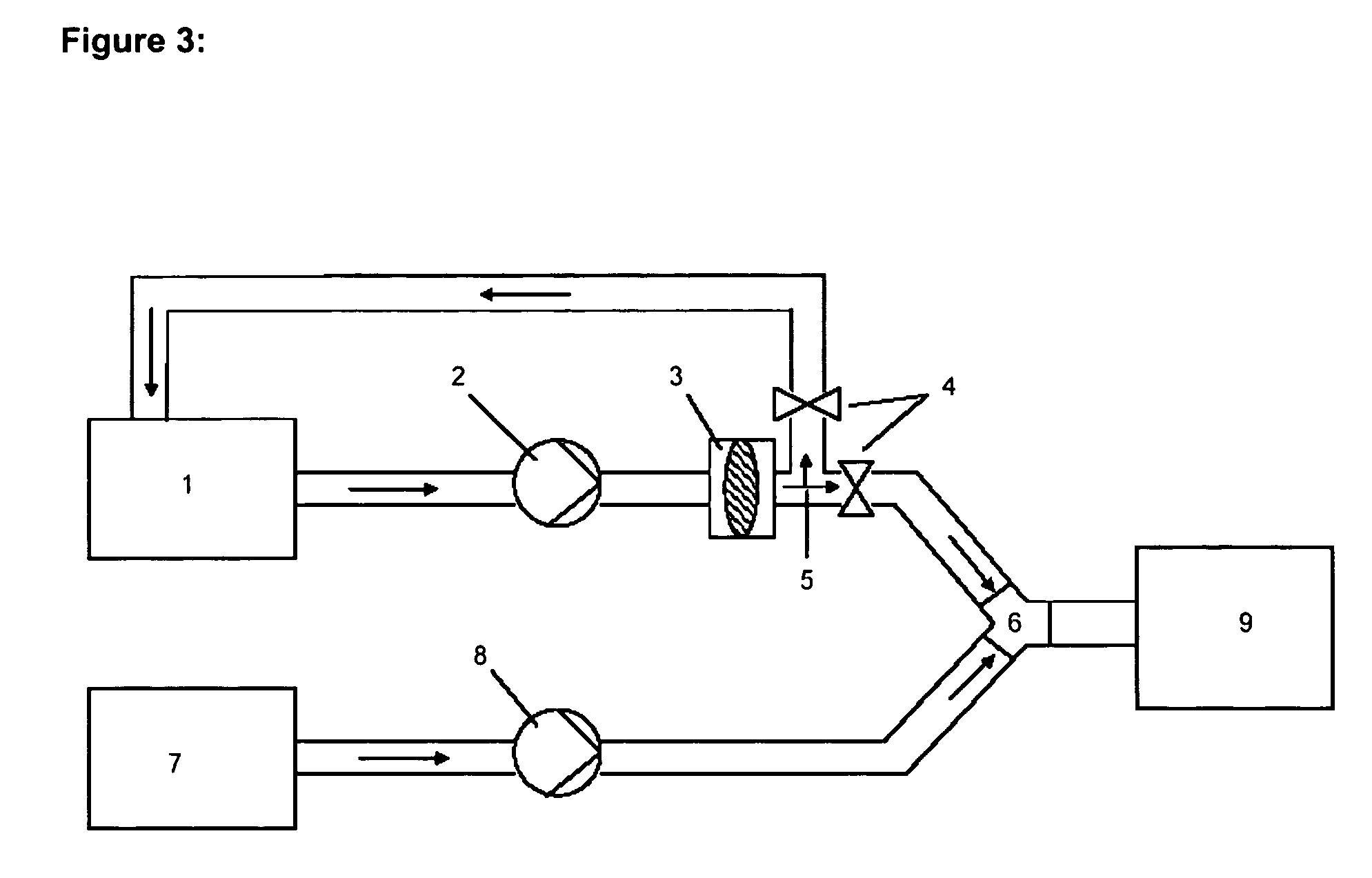Method for preparing homogenous liposomes and lipoplexes
a technology of liposomes and lipoplexes, applied in the direction of liposome delivery, pharmaceutical delivery mechanism, medical preparations, etc., can solve the problems of unstable dispersion, unsuitable clinical applications for products, and high energy consumption of the methods involved, and achieve stable and homogeneous lipoplexes
- Summary
- Abstract
- Description
- Claims
- Application Information
AI Technical Summary
Benefits of technology
Problems solved by technology
Method used
Image
Examples
embodiment 1
Moreover it has been found that the quality of the liposomes, particularly the homogeneity of the liposome mixture, could be improved still further if the extrusion is carried out in a continuous process and the lipid suspension is extruded several times through the extrusion membrane, preferably between 2 -20 times, (cf. e.g. Embodiment 1, Table 4). Consequently the present invention also relates to processes for preparing homogeneous liposomes by low pressure extrusion of a lipid suspension, preferably with a lipid concentration between 0.04-5 mg / ml, preferably between 0.1-2 mg / ml, most preferably between 0.1-1 mg / ml, still more preferably between 0.25-1 mg / ml, through a 600-900 nm membrane, preferably with a flow rate between 10-250 ml / min, most preferably between 50-150 ml / min, more preferably between 75-120 ml / min, characterised in that the lipid suspension is extruded through the membrane at least twice, preferably between 2 and 20 times. Particularly preferred is a correspond...
examples of embodiments
The Examples that follow serve as a further illustration of the objects and processes according to the invention.
Material and Methods:
Chemicals and Cells:
The adjuvants used meet the requirements for pharmaceutically permitted adjuvants: saccharose (Südzucker AG, München, DE), sodium chloride (Merck KG, Darmstadt, DE), WFI (water for injection) (Boehringer Ingelheim, Biberach, DE).
All the lipids used are commercially obtainable: DC-Cholesterol and DOPE can be obtained from Avanti Polar Lipid, Inc., DAC30 at G.O.T. Therapeutics Berlin, DE.
The plasmids used, hereinafter also simply referred to as nucleic acids in some cases, such as e.g. pMCP-1, an MCP-1 (monocyte chemoattractant protein 1) coding plasmid, PEGFP, an EGFP (enhanced green fluorescent protein of A. victoria) expressing plasmid, were cloned and prepared by Boehringer Ingelheim. To do this the coding region of MCP-1 or EGFP was cloned behind a heterologous promoter (CMV promoter). The plasmid also comprised a sel...
example 1
Preparation of homogeneous liposomes DOPE / DC-Chol 70 / 30 (DC30)
Influence of the Extrusion Time / Cycles on the Size and Homogeneity of the Liposomes:
In order to produce homogeneous DOPE / DC-Chol 70 / 30 liposomes a DC30 lipid suspension in transfection medium with a lipid concentration of 1 mg / ml was prepared (see above). By means of a holding vessel the lipid suspension was continuously pumped through a polycarbonate membrane with a pore size of 600 nm (Messrs. Millipore, Billerica, Mass. USA) and a flow rate of 80 ml / min through the sealed low pressure extrusion apparatus (see FIG. 1). The pressure measured at the membrane was less than 1×105 Pa (105 Pa=1 bar). In a corresponding experimental set-up an extrusion time of about 10 min corresponded to approximately 2 extrusion cycles.
Apparatus:Filtron peristaltic pumpSilicon tube (internal diameter 4 mm)Extrusion unit:Millipore filter housing600 nm polycarbonate membrane / Ø 47 mmHolding vessel:1000 ml separating funnel
As can be seen ...
PUM
 Login to View More
Login to View More Abstract
Description
Claims
Application Information
 Login to View More
Login to View More - R&D
- Intellectual Property
- Life Sciences
- Materials
- Tech Scout
- Unparalleled Data Quality
- Higher Quality Content
- 60% Fewer Hallucinations
Browse by: Latest US Patents, China's latest patents, Technical Efficacy Thesaurus, Application Domain, Technology Topic, Popular Technical Reports.
© 2025 PatSnap. All rights reserved.Legal|Privacy policy|Modern Slavery Act Transparency Statement|Sitemap|About US| Contact US: help@patsnap.com



